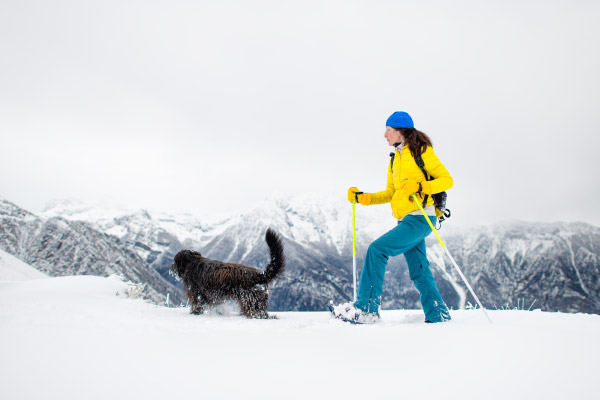As we head into the winter season, we can see nature’s landscape change. The temperatures drop, animals begin to migrate or hibernate, the mountains get covered in snow and trees begin to lose their leaves. However, not all the plants lose their leaves when winter comes around. Have you ever wondered why some trees lose their leaves and others don’t? Many of the trees around here like our Cottonwood and Aspen lose their leaves in the autumn into winter season, whereas our conifers, such as Spruce, Fir or Pine trees, do not. Why is this?
As you prepare to go outside for a ski, snowboard, snowshoe or cross country ski, you have to take into account the winter weather and environment in order to keep you safe and protected. We usually think of how cold it is going to be, will it be windy, what should I bring for food as I’ll need energy, and how much water should I bring to stay hydrated. Plants do the very same thing and have a few tricks to the trade on how to handle the winter. The next time you go outside, go check out and see if you can spot their winter survival secrets.
Let’s do an analysis between a Pine and an Aspen. Just to clarify, both trees have leaves. The needle is a modified leaf to aid in the survival of the pine tree. One big difference between the Pine and the Aspen is that one is evergreen and the other is deciduous. Pines are evergreens. Their needles stay green throughout the winter. Aspens are deciduous and have broad leaves that will turn color and shed seasonally. Keeping or shedding leaves is all based on energy: gaining and retaining it. And to battle winter extremes to conserve energy can come at a cost for their survival. Are they prepared?
First, conifer trees are able to withstand wintery harsh winds and heavy amounts of snow. Conifer needles are thin and narrow that are flexible and have lower wind resistance. This means that they can withstand heavy winds and heavy snow loads without a lot of damage to the tree. While an Aspen has large, flat and broad leaves. This leads to more surface area exposed to wind which can pose as sails catching strong winds and contributing to limbs breaking or the tree falling over. Also having too much exposed surface area on the Aspen leaves can cause large amounts of snow to accumulate onto the leaves, and excess snow weight can cause breakage to the tree as well.
Second, conifer trees are adapted to retain their moisture. A Pine needle is covered in a cuticle, which is a waxy coating on the needle. This serves as a waterproof and windproof coating that protects from water or moisture loss. This adaptation allowed conifers to retain water and keep hydrated for longer periods of time. Deciduous, like the Aspen, do not have a waxy coating and moisture is able to be evaporated from the tree on the driest of days and lose water much quicker.
And third, conifer trees are able to capture sunlight all year long. Being able to absorb sunlight all year long contributes to sugar making and food for the tree to continue to grow. Aspen lose their green leaves in the autumn time, they take a break from the energy-consuming and making of photosynthesis and have to work extra hard in the spring to grow their leaves to provide enough energy for the tree before winter comes around again. While our Pine is able to continue to produce sugars through photosynthesis on a slight consistent basis.
As you go outside on your next venture, see if you can point out these secrets to a conifer’s survival in this winter wonderland. It also makes us think about how we adapt to be outside on our favorite winter excursions. Maybe wear an outer shell that is water and windproof from preventing yourself from losing heat or water!
Resources
https://townsquarenoco.com/the-ultimate-guide-to-surviving-and-thriving-in-winter-in-colorado/
https://www.coloradoinfo.com/blog/transplant-guide-winter-colorado
https://cpw.state.co.us/learn/Pages/Survival.aspx
Christina Belardo is the Girls in Science Coordinator at Walking Mountains Science Center. In her free time, she is a scientific illustrator exploring the outdoors through pens and a sketch pad.






